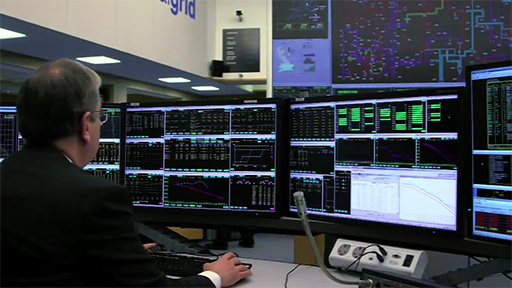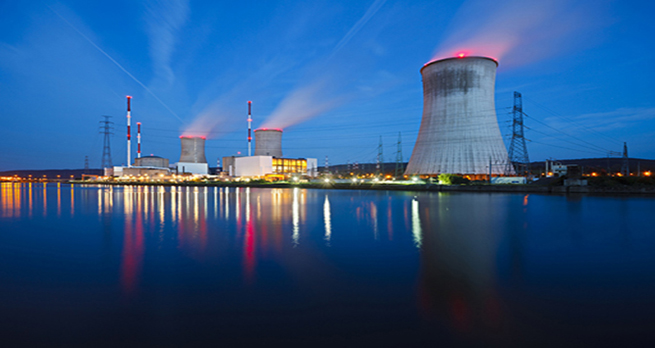2.1.5 Running the National Grid
Maggie Philbin spends the morning in one of Britain’s most secret locations, the control room of the National Grid where she monitors our demand for electricity with supply.
Download this video clip.Video player: ou_futurelearn_nuclear_energy_vid_1032.mp4


Transcript
MAGGIE PHILBIN
Dawn breaks, and Britain gets going. Breakfast time means the toaster's on, the kettle's boiling, and showers are pumping out hot water, all using electricity. And all the electricity in the country is controlled here, by this team of 25 people. This is the National Grid. This is one of the most secret locations in the UK - National Grid's control centre.
Up there on that board you've got every single power station in the country, and the demand at this precise moment. Over 300 power stations across the country turn coal, gas, nuclear, and wind into precious electricity. And it's the job of these guys to send that electricity from where it's made to where we need it, down thousands of miles of high voltage cable across the country, directly to our homes.
MAN
Hello?
MAGGIE PHILBIN
And on this particular cold winter morning, the demand for electricity is skyrocketing, nearly doubling in just 90 minutes. In charge of the grid this morning is Rachel Morfill.
So it's now 20 past 6 in the morning, and we're coming into this big power increase. What are you calling on? Which stations are you bringing online?
RACHEL MORFILL
What we have is we've got a whole variety of power stations. Today here, we've got Ironbridge power station will be coming on fairly soon. West Burton there. But we will just look at how much we need, and make sure that's planned in.
MAGGIE PHILBIN
In winter, Britain uses on average 50 gigawatts of electricity. That's 50 billion watts. The grid meets that demand using 7 gigawatts from 9 nuclear power stations. Coal power stations generate around 25 gigawatts, gas power stations make a little more, and renewables, including wind, provides around 10 gigawatts. Another 6 gigawatts comes from abroad, or other sources.
Interactive feature not available in single page view (see it in standard view).
In the next section, you will look in more detail at where the UK’s power stations are sited.
